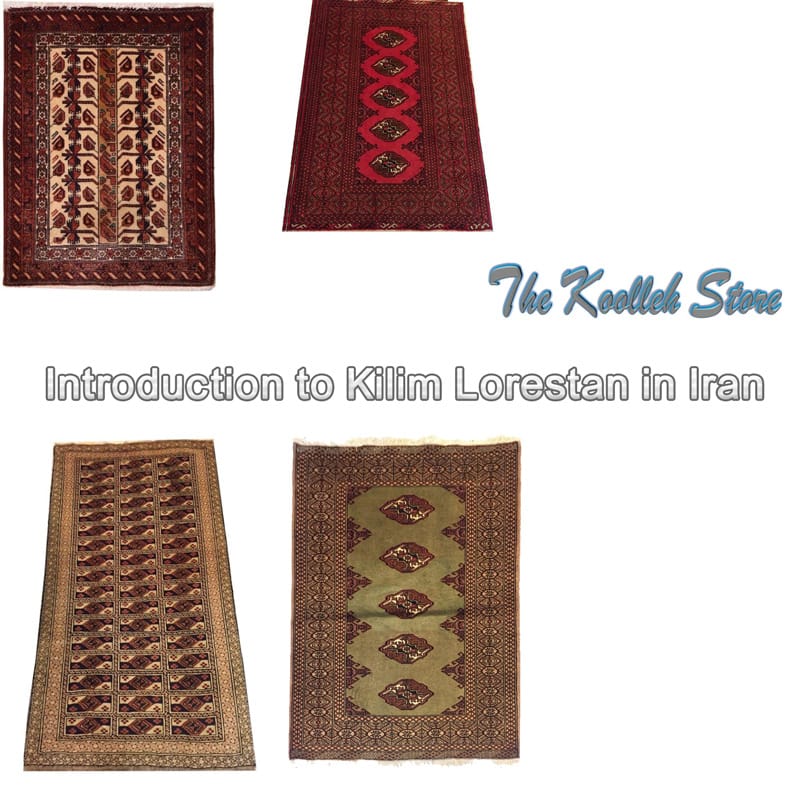Introduction to Kilim Lorestan in Iran

In Lorestan province, kilim weave is more than old carpet and in fact carpet evolved over many centuries. Its motifs are drawn from nature, hunting and abstract shapes. Which is woven and marketed by traditional religious beliefs and beliefs.
The word kilim is simply a flat-textured rug or a type of rug with no fluff or sleep. The smooth weaving industry is found in all parts of the world. Most books on carpeting have only a few lines about kilim as a simple nomadic product. The first carpet used by humans after woven from animal fibers and animal skin was undoubtedly the mat.
But in examining the history of textiles in the world and the earliest textiles, it comes to the conclusion that kilim, as the first human weave to be worn, has not only an ancient history of all sub-bases, but of its history and history. Even more than the fabrics of the first fabrics were made of flax.
However, weaving kilims initially appeared among the tribal and nomadic tribes whose main occupation was farming. They learned kilim weaving after weaving and weaving, and then over the centuries gained sufficient skill and variation in kilim weaving and improved their working tools a little. Today, kilim weaving is simple from Sumak to Ardebil, East Azarbaijan, Kerman, Fars and some parts of Khorasan province.
The unique kilim weaving culture is in fact a response to the basic needs of the villagers and settlers who have been in search of dry cladding, tents, and warmer bedding. Kilim is a woven without lint that is woven with wool, cotton or hemp yarn with warp and weft. As such, cotton yarn is used as a yarn and colorful wool yarn as a weft.
In kilim weaving the map is of little use and the role-playing is usually done mentally. The kilims of each area have a special design and color that is different from other textures depending on their texture. Kilim is more than just a rug. In fact, carpet has evolved over centuries through the evolution of kilim. For kilim we use vertical and horizontal weights, but we need more limited tools and raw materials than carpet weights.
The kilim is woven in three simple ways, varnish and highlight. In simple kilim weaving, one passes through the middle of the pad. This kilim is a root and its texture is not usually used in pre-prepared maps. Simple kilim motifs are generally geometric and we rarely see curved motifs in this type of kilim. Occasionally, on simple background kilims, colored wool fibers create a pattern that is often geometric.
The prominent kilim has a simple background, but the original design is like a rug. On the carpet map, it is tied to the kilim pile and trimmed at the end of the extra pile. , Arasbaran and Meshkin city. This type of kilim is woven in Kurdistan and Kerman with another design and role in Kerman called Shiriki.
The best Iranian veins are produced by Il Shahsun or Ilson, who have a long history in this field, as the word Verne has always been the name of Shahsun. Woven method: In this method only the yarn and the yarn are used for kilim texture. The colorful pads pass underneath and over the strands of thread, with the colors changing as the patterns emerge and both smooth, smooth and consistent on the kilim.
Screw method: In addition to the thread and the thread we use a thin thread in the fabric and in fact the thread is twisted through the thread, then by passing the thin thread and slamming it with the comb, the action The conflict between the yarn and the yarn becomes definite. This style of weaving, which many scholars call the intermediate between kilim weaving and carpet weaving, is actually the last home of kilim weaving to carpet weaving.
The kilim texture known as Verni in East Azerbaijan as well as the kilim texture known as Shiriki Pich in Kerman province are referred to as these types of kilims, which are woven in the form of wool, called Sumak. Sometimes they are embroidered on kilims, these are known as needle kilims.
